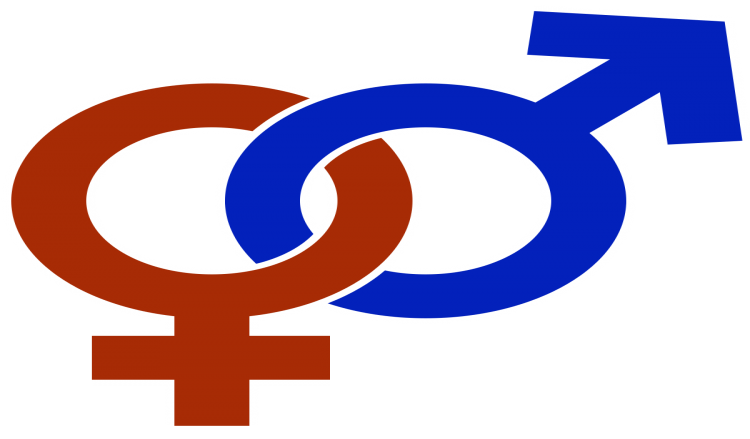- 06 April, 2023
- 0 Comment(s)
- 631 view(s)
- লিখেছেন : Ahana Chattopadhaya
French is a grammatically gendered language which means all the nouns are divided into two genders : male and female. Subsequently, the verbs and the adjectives also adhere to the necessary accord rules with respect to the gender of the noun in question.
Like other Romance languages, French is derived from Latin which had three genders: masculine, feminine and neutral. Masculine and feminine genders were used for animates, respecting their natural genders, while neutral gender was reserved for inanimates. Those words which were already termed as masculine and feminine in Latin tend to stay the same in ancient French. On the other hand, the grammatically gender-neutral words were changed predominantly to masculine. In Latin, gender neutral words had "um” endings while masculine words had "us" ending and feminine words had "a'' endings. Due to the phonetic proximity of “um” and “us”, almost all gender-neutral words became masculine.
Nevertheless, up until the classical era, a lot of words had fluctuating grammatical genders. Paralally, people started associating since then (consciously or unconsciously) the notion of strength to masculine gender and that of weakness to feminine genders. For example, the grammarian Scipion Dupleix in his work "Liberté de la langue française dans sa pureté" voiced his preference for masculine genders over feminine because, according to him, the former is more excellent than the latter. In 1647, grammarian Claude Favre de Vaugelas, wrote in Remarques sur la langue française : The masculine gender being nobler should predominate everytime it is found together with the feminine form. In 1767, grammarian Nicolas Beauzée wrote : "The masculine gender is reputed as nobler than feminine gender because of the superiority of male over female". This way, the famous rule "The masculine gender prevails over the feminine gender" started gaining its popularity and has been henceforth taught in schools. This new rule soon started replacing an old grammatical rule called the "accord of proximity" which states that the nearby adjective should be accorded in gender and number as per the nearest noun. For instance, in 1691 Racine wrote in Athalie : “ces trois jours et ces trois nuits entières”. Here, we can see that the adjective “entière” is accorded as per the nearest noun “nuit” which is feminine. It is worth mentioning that this ancient grammatical rule is still present in the daily usage of the French language. Thus, the 17th century marks the beginning of the grammatical gender bias that is still present in the contemporary French language.
The masculinization of French wasn’t only limited to the accord of adjectives but also had an effect on the name of the professions. This way, up until the 17th century, French had all the necessary feminine words related to the professional roles. For example, "Les poétesses"(poetess), "médecines" (lady doctor) , "professeuses" (lady professor), "philosophesses"(lady philosopher), "peintresses"(lady painter) or even "autrices"(female authors) had their place in the French language. In an attempt to limit the accessibility of women towards these professions, the grammarians started modifying the grammatical rules. The French Academy removed certain feminine forms of professions from their dictionary such as “mairesse” (lady mayor), “poétesse” (poetess) or “officière”(lady officer) indicating that these professions belong to only men.
These are precisely the terms that the feminists have been wanting to reintroduce in the French language. They won partially as the French Academy finally passed, on 28th February 2019, a report on the “Feminization of job titles”. This is a turning point in the history of France because the French Academy has always been reluctant to welcome any new changes that hurt the purity of the language. According to the report, the French Academy concluded, “There’s no impediment to Feminization principles for the nouns of occupations and professions.” However, the report goes on to show that there are numerous feminine forms for certain occupations such as “auteur” (author) (feminine forms : “authoresse", "autoresse", "autrice" and "auteure" ) or “chef” (boss) (feminine forms : “la chef”, “chèfe”, “chève” , “cheffesse”, “cheftaine” and "Cheffe" ).This is to be noted that the French Academy hasn’t validated a single term in particular. It lets the speaker decide which term will prevail over the others. On the other hand, there existed certain feminine forms as “chevalière”(lady knight), “officière”(lady officer) or “commandeure”(lady officer) which have been rarely used. Interestingly enough, the resistance towards feminine professional names doesn’t only come from men. Sometimes it is women themselves who refrain from using these feminine terms. As an example, the report points out that the female members in the judicial world refuse to associate themselves with the term “avocate” (lady lawyer). This resistance towards the feminization of the French language seems to reveal a society which is still very sexist. Writer Leïla Slimani’s quotation : "It’s not the language that is sexist, it’s the society", summarises well the contemporary social situation in France.
It is worth mentioning here that unlike France the other Francophone countries like Quebec, Switzerland or Belgium have already progressed a lot by welcoming several methods of Inclusive Writing or by adopting a gender-neutral language (in French, "langage épicène"). For example, Switzerland has opted for more gender-neutral language rather than inclusive writing because the former provides a non-binary environment where an individual is not obliged to conform to a specific gender. It is the "neutrality" of the language that they want to achieve. Quebec on the other hand is a pioneer in this field as they have been advocating for the Feminization of the French language since 1970. In 2018, Quebec Board of the French Language or l'Office québécois de la langue française (OQLF) has published in Gazette officielle du Québec, an official publication of the Quebec Government, an opinion on the Feminization of people's name. It recommends using either feminine forms of nouns or the terms which are identical in both masculine and feminine forms, to designate a woman. It is also recommended to use Gender-neutral language in Job offers or tender bids and in other administrative texts. In Belgium, a decree for the Feminization of the nouns of job titles was passed in 1993. In 1994, the Superior Council of the French language passed a booklet named Guide de la féminisation des noms de métier, fonction, grade ou titre (Feminization guide for the nouns related to jobs, posts, rank or titles) with a rich collection of nouns. This guide was reedited in 2005. Ten years later, it’s positive impacts could be seen in the frequent usage of terms such as "soldate américaine" (American lady soldier) or "vice-rectrice" (Lady vice-président). In 2015, a third guide, much more enriched with nouns, was published to meet the demand of users.
Apart from the feminization of nouns of professions, there are other linguistic tools available to promote a language that is more inclusive. One of those tools is to resort to a gender-neutral language. First of all, what is Gender-neutral language or "le langage épicène" ? It is a language that avoids bias towards a particular sex or gender. For example, in English, "policeman" and "stewardess" are gendered job titles. Their corresponding gender-neutral terms are "police officer" and "flight attendant". Similarly, in French, we can use "les être humains " (Human beings) instead of "les hommes" (which indicates “men” in the first place just like its English counterpart but which can also refer to all human beings, male and female both included ). Another example would be using the term "diplomate" (diplomat) instead of "ambassadeur" or “ambassadrice” (ambassador ). Gender-neutral language not only gives visibility to women in the workplace but it also includes non-binary people in the professional milieu.
In France, the debate around these linguistic questions has been particularly vehement and it has solidified around the expression “Inclusive Writing”. So, what exactly is “Exclusive Writing”? It is a set of writing principles that aim for equal representation of women and men. The earlier traces of the term "Inclusive writing" was found to be used in the Anglophone world since the 70s. Female protestant and evangelical theologians used this method to include women in religious texts in order to involve them in religious practices. In France, this term "l'écriture inclusive" was supposedly first coined by an Agency of communication who published a manual on Gender-inclusive writing to accompany the companies who desired to be more egalitarian towards both sexes. So, what are the different methods of Inclusive writing? The first method is the feminisation of nouns. We have already discussed this above in the “Feminisation of the name of the professions” part. To be precise, this method contradicts the generic masculine form, which designates for example "président"(president) and "chirurgien"(surgeon) to both sexes. This method suggests that we use the corresponding feminine forms "présidente" and "chirurgienne" explicitly. The second method would be to vary the rules of accord of adjectives with many nouns, i.e. to accord by majority or by proximity, on which I have elaborated biefly previously. For example, we should say "Les électeurs et les électrices inscrites " and not " Les électeurs et les électrices inscrits". Here, we must use the adjective "inscrite" (feminine form of adjective "registered") instead of "inscrit" (masculine form of adjective "registered") because the nearest noun "électrice" (elector) is feminine. According to the rule of proximity, the adjective should be accorded as per the nearest feminine noun and not as per its masculine form which is normally required by French grammar. Therefore, inclusive writing urges us to recognize the rule of the “accord of proximity” as the correct way of application and to eventually systemize this trend. The third method is called "la double flexion", where we mention both the genders separately. For example, "Les étudiants" (masculine generic form : the students) becomes "Les étudiantes (feminine form) et les étudiants (masculine form)". Then comes the question of "L'ordre de mention" (The order of mentioning). Which term should be mentioned first ? It may seem that it has to do something with the alphabetical order. But surprisingly it is more of a semantic order, related to the significance of the terms. It is generally observed that male nouns are generally mentioned first except one example "mesdames et messieurs" (ladies and gentlemen) which has its root in gallantry. The last method is the use of "point médian" (middle dot). This method consists of writing a word with both of its masculine and feminine forms separated by a middle dot. “Le point médian” is very common, particularly in the academic milieu and in email communications. For example, in writing we can use "Un·e directeur·rice" (a director·directress) which can be pronounced orally as "une directrice et un directeur" (a directress and a director). The middle dot is just another typographical form among several others. For instance, we can write the word "ami" (masculine form of "friend") and "amie" (feminine form of "friend") using different typographical forms such as with the help of round brackets [un(e) ami(e)], capital letters [unE amiE], hyphen [un-e ami-e], or even with a slash [un/e ami/e]. Despite the apparent simplicity of these linguistic tools, inclusive writing has faced the burns of a lot of virulent criticisms. Then, what are the counterarguments?
The first and the most obvious one is that French is already an inclusive language because the grammatical masculine gender has also a gender neutral notion. However, it creates an interpretation problem where people tend to confuse the generic masculine gender with its specified masculine gender counterpart. A simple example to explain this problem would be the following sentence : "Les étudiants sont arrivés." Which means "Students have come". Here it can't be precised whether "les étudiants" is referring to a group of only male students or if it is the generic masculine form (referring to students in general without specifying any gender). But, it has been established through various experiments and researches that the human brain is not capable of differentiating the two distinct notions (specific and generic) of the same grammatical gender. It has been also observed that the frequent usage of the generic masculine gender discourages women in certain aspects of life. For example, when applying for a post if the job offer includes both the masculine and the feminine job titles then there is a high probability that more women will apply for the post.
The critics of inclusive writing accuse that it makes the learning process more difficult and confusing for the young students. However, linguistic experts mention that children are exposed to the grammatical genders from a very young age. As a result of which they are quite familiar with the specific gendered notion of both the grammatical genders in French. Hence, they have much more difficulty to disassociate themselves suddenly from the gendered specific notion and spontaneously align their thoughts to gender neutral notion.
Vous pouvez aussi ajouter l’argument esthétique : c’est moche (avancé aussi pour des mots comme “autrice”...)The esthetical argument is also very prevalent. Words like “autrice” sound not only awful but it looks ugly too, cite many objectors of inclusive writing.
I would like to end by mentioning a conversation of Gilles Ménage with Madame de Sévigné : « Madame de Sévigné s’informant sur ma santé, je lui dis : Madame, je suis enrhumé. Elle me dit : je la suis aussi. Il me semble, Madame, que selon les règles de notre langue, il faudrait dire : je le suis. Vous direz comme il vous plaira, répondit-elle, mais pour moi, je ne dirai jamais autrement que je n’aie de la barbe. » A rough translation would be : "Madame de Sévigné asking about my health, I told her : I have cold. She said "Me too"(*here the neutral pronoun "le" has been used). It seems Madam according to the rule of our language, it should be "Me too" (*here the feminine form "la" is used). Say as you please, but for me, I will never say otherwise unless and until I have a beard. This goes on to show that even in the 17th century women activists fought viciously against the masculinization of the French language. I would like to conclude by saying that we should rethink how we use our language because clearly a language is closely intertwined with the way a society thinks. Therefore feminising a language is not only about highlighting and emphasising on the feminine terms but also to demasculinize our language in order to create a more inclusive space towards a more egalitarian society.
Bibliography :
Articles in French
1. “Langage épicène.” Wikipédia, 19 Feb. 2023. Wikipedia, https://fr.wikipedia.org/w/index.php?title=Langage_épicène&oldid=201547085.
2. Liste de termes épicènes ou neutres pour la rédaction épicène. https://vitrinelinguistique.oqlf.gouv.qc.ca/25465/la-redaction-et-la-communication/feminisation-et-redaction-epicene/redaction-epicene/formulation-neutre/liste-de-termes-epicenes-ou-neutres.
3. “Féminisation en français.” Wikipédia, 18 Feb. 2023. Wikipedia, https://fr.wikipedia.org/w/index.php?title=Féminisation_en_français&oldid=201508899
4. Lecaplain, Guillaume. “Féminisation des noms de métiers : que dit exactement le rapport de l’Académie ?” Libération, https://www.liberation.fr/france/2019/03/01/feminisation-des-noms-de-metiers-que-dit-exactement-le-rapport-de-l-academie_1712324/.
5. Alfonsi, Mathieu. “Pourquoi la langue française est-elle genrée ?” NEON, 5 July 2021, https://www.neonmag.fr/pourquoi-la-langue-francaise-est-elle-genree-556721.html.
6. Argument Historique. https://www.unine.ch/epicene/home/pourquoi/argument-historique.html.
7. Fracchiolla, Béatrice. “Anthropologie de la communication : la question du féminin en français.” Corela. Cognition, représentation, langage, no. 6–2, Dec. 2008. journals.openedition.org, https://doi.org/10.4000/corela.286.
8. “Titres et métiers au féminin : l’Académie française valide.” TV5MONDE, 21 Feb. 2019, https://information.tv5monde.com/terriennes/titres-et-metiers-au-feminin-l-academie-francaise-valide-286408.
9. “Féminisation des mots : la France en retard.” TV5MONDE, 18 Mar. 2015, https://information.tv5monde.com/terriennes/feminisation-des-mots-la-france-en-retard-22877.
10. La Féminisation Des Noms de Métiers et de Fonctions | Académie Française. https://www.academie-francaise.fr/actualites/la-feminisation-des-noms-de-metiers-et-de-fonctions.
11. Accord de l’adjectif avec un doublet en rédaction épicène. https://vitrinelinguistique.oqlf.gouv.qc.ca/23997/la-redaction-et-la-communication/feminisation-et-redaction-epicene/redaction-epicene/doublets-complets/accord-de-ladjectif-se-rapportant-a-un-doublet.
Article in English
12. “Gender-Neutral Language.” Wikipedia, 16 Mar. 2023 Wikipedia, https://en.wikipedia.org/w/index.php?title=Gender-neutral_language&oldid=1144982159.
Website used for bibliography :
https://zbib.org/
All the links :
https://fr.m.wikipedia.org/wiki/F%C3%A9minisation_en_fran%C3%A7ais
https://fr.m.wikipedia.org/wiki/Langage_%C3%A9pic%C3%A8ne
https://vitrinelinguistique.oqlf.gouv.qc.ca/index.php?id=25465
https://www.neonmag.fr/pourquoi-la-langue-francaise-est-elle-genree-556721.html
https://www.unine.ch/epicene/home/pourquoi/argument-historique.html
https://www.unine.ch/epicene/home/pourquoi/argument-historique.html
https://information.tv5monde.com/terriennes/feminisation-des-mots-la-france-en-retard-22877
https://www.academie-francaise.fr/actualites/la-feminisation-des-noms-de-metiers-et-de-fonctions
https://vitrinelinguistique.oqlf.gouv.qc.ca/index.php?id=23997
https://en.m.wikipedia.org/wiki/Gender-neutral_language
লেখক: গবেষক, শিক্ষক।





0 Comments
Post Comment